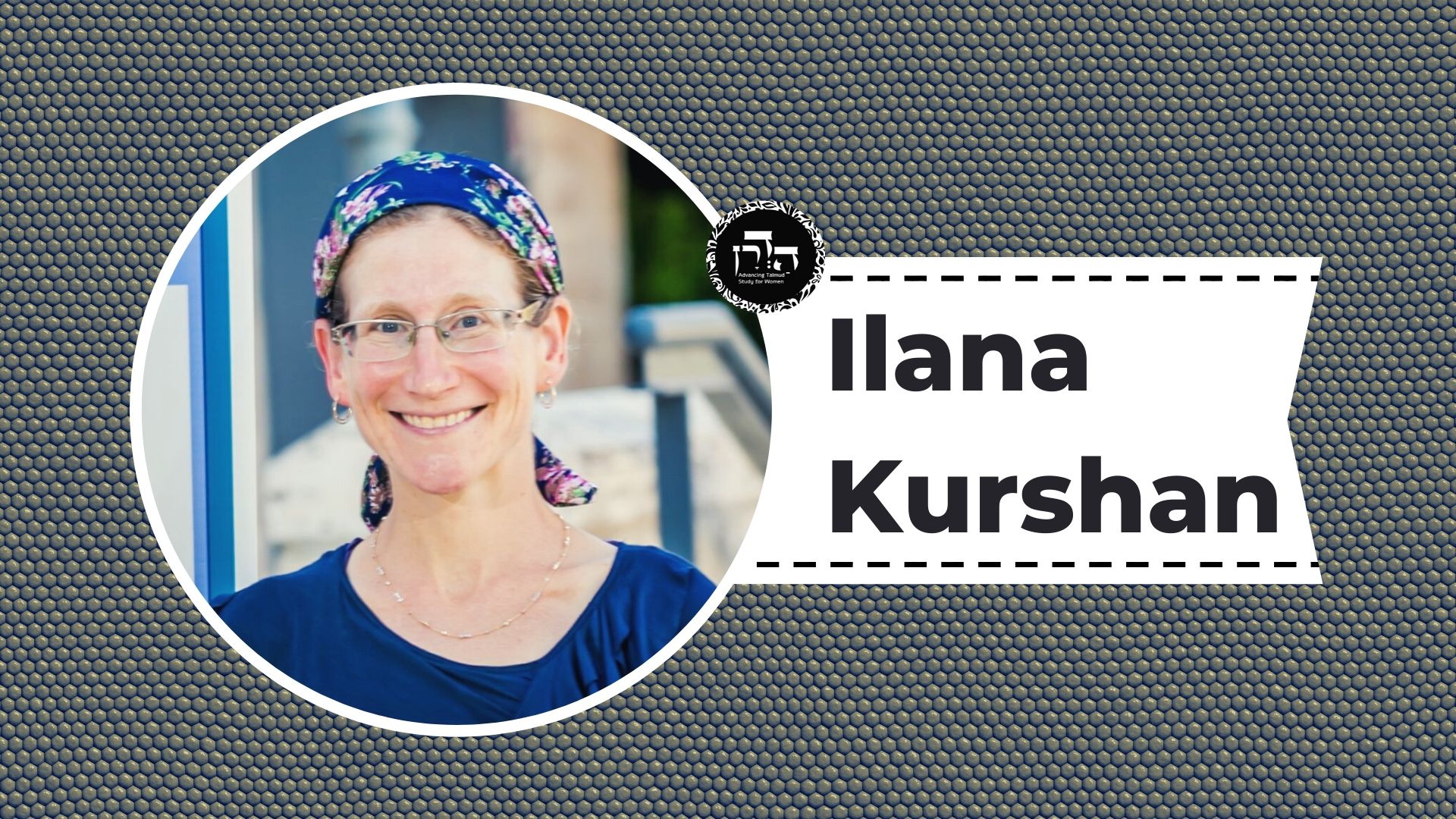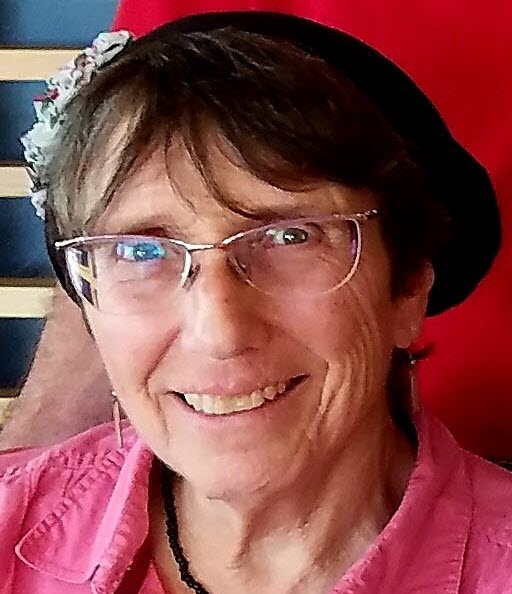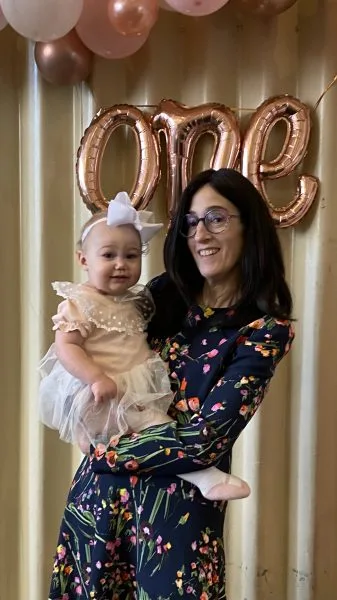Shabbat 155
יָתֵד בָּאִילָן וְתָלָה בָּהּ כַּלְכַּלָּה. לְמַעְלָה מֵעֲשָׂרָה טְפָחִים — אֵין עֵירוּבוֹ עֵירוּב. לְמַטָּה מֵעֲשָׂרָה טְפָחִים — עֵירוּבוֹ עֵירוּב.
a stake in a tree and hung a four–by–four handbreadth basket from it into which he placed the food for his joining of the Shabbat boundaries, if the basket was above ten handbreadths from the ground, his eiruv is not a valid eiruv. It is prohibited for him to take the bread from the basket on Shabbat, because the basket’s area and height render it a private domain, and he is standing in a different domain. If the basket was below ten handbreadths from the ground, his eiruv is a valid eiruv.
טַעְמָא דְּנָעַץ יָתֵד בָּאִילָן, הָא לֹא נָעַץ, אֲפִילּוּ לְמַטָּה מֵעֲשָׂרָה טְפָחִים אֵין עֵירוּבוֹ עֵירוּב. וְהָא הַאי תַּנָּא דְּקָאָסַר בִּצְדָדִין, וְקָשָׁרֵי בְּצִדֵּי צְדָדִין!
The Gemara examines this statement: The reason for this distinction between above and below ten handbreadths is specifically because he drove a stake into a tree and hung the basket from it. However, if he did not drive a stake into a tree, but tied the basket to the tree itself, even if it was below ten handbreadths from the ground his eiruv is not a valid eiruv. If he were to take the bread from the basket he would be making use of the sides of the tree, which is prohibited on Shabbat. And isn’t it the case that this is the tanna who prohibits using the sides of the tree, and nevertheless, he permits using the sides of the sides, contrary to Rava’s opinion?
אָמַר רַב פָּפָּא: הָכָא בְּכַלְכַּלָּה דְּחוּקָה עָסְקִינַן, דְּבַהֲדֵי דְּשָׁקֵיל לֵיהּ לְעֵירוּב — קָמְנַיֵּד לֵיהּ לְאִילָן, וְקָמִשְׁתַּמֵּשׁ בְּאִילָן גּוּפֵיהּ. וְהִלְכְתָא: צְדָדִין אֲסוּרִין, צִדֵּי צְדָדִין מוּתָּרִין.
Rav Pappa said: Here, we are dealing with a narrow-mouthed basket that is tightly tied to the tree. Since it is difficult to remove anything from it, when he takes the bread for the eiruv he moves the tree, and he is thereby using the sides of the tree itself and not the sides of the sides of the tree. The Gemara concludes: And the halakha is that use of the sides of a tree or an animal is prohibited on Shabbat, but use of the sides of the sides is permitted.
אָמַר רַב אָשֵׁי: הַשְׁתָּא דְּאָמְרַתְּ צְדָדִין אֲסוּרִין, הַאי דַּרְגָּא דְּמִדַּלְיָא — לָא לַינְּחֵיהּ אִינִישׁ אַדִּיקְלָא, דְּהָווּ לְהוּ צְדָדִין. אֶלָּא, לַינְּחֵיהּ אַגְּווֹאזֵי לְבַר מִדִּיקְלָא, וְכִי סָלֵיק — לָא לַינַּח כַּרְעֵיהּ אַגְּווֹאזֵי, אֶלָּא לִיתְּנַח אַקָּנִין.
Rav Ashi said: Now that you said that the halakha is that use of the sides is prohibited, with regard to this ladder that one climbs to an elevated area, a person may not lean it against the palm tree itself because it is considered use of the sides of the tree on Shabbat. Rather, he should lean it on stakes that are external to the trunk of the palm tree. And when one climbs the ladder, he should not place his foot on the stakes. Rather, he should place it on the rungs of the ladder because it is prohibited to use the sides of the tree.
מַתְנִי׳ מַתִּירִין פְּקִיעֵי עָמִיר לִפְנֵי בְּהֵמָה, וּמְפַסְפְּסִין אֶת הַכִּיפִין, אֲבָל לֹא אֶת הַזִּירִין. אֵין מְרַסְּקִין לֹא אֶת הַשַּׁחַת וְלֹא אֶת הֶחָרוּבִין לִפְנֵי בְּהֵמָה, בֵּין דַּקָּה וּבֵין גַּסָּה. רַבִּי יְהוּדָה מַתִּיר בֶּחָרוּבִין לַדַּקָּה.
MISHNA: One may untie peki’in of grain before an animal on Shabbat, and one may spread the kifin but not the zirin. These terms will be explained in the Gemara. One may not crush hay or carobs before an animal on Shabbat in order to facilitate its eating. He may do so neither for a small animal [daka] nor for a large one. Rabbi Yehuda permits to do so with carobs for a small animal, because it can swallow the hard carobs only with difficulty.
גְּמָ׳ אָמַר רַב הוּנָא: הֵן הֵן פְּקִיעִין, הֵן הֵן כִּיפִין. פְּקִיעִין תְּרֵי, כִּיפִין תְּלָתָא, זִירִין — דְּאַרְזֵי. וְהָכִי קָאָמַר: מַתִּירִין פְּקִיעֵי עָמִיר לִפְנֵי בְּהֵמָה, וּמְפַסְפְסִין. וְהוּא הַדִּין לְכִיפִין, אֲבָל לֹא אֶת הַזִּירִין — לֹא לְפַסְפֵס וְלֹא לְהַתִּיר. אָמַר רַב חִסְדָּא: מַאי טַעְמָא דְּרַב הוּנָא קָא סָבַר לְמִטְרַח בְּאוּכְלָא — טָרְחִינַן, לְשַׁוּוֹיֵי אוּכְלָא לָא מְשַׁוֵּינַן.
GEMARA: Rav Huna said: They are called peki’in and they are also called kifin. The difference between them is that peki’in are tied with two knots, whereas kifin are tied with three. Zirin, which may not be moved on Shabbat, are bundles of cedar branches eaten by animals when the branches are small and moist. And this is what the mishna is saying: One may untie peki’in of grain before an animal and spread them, and the same is true for kifin, but not for zirin, which one may neither spread nor untie. Rav Ḥisda said: What is the reason for the opinion of Rav Huna? He holds that with regard to exerting oneself with food on Shabbat, one may exert himself; however, with regard to rendering food edible, one may not render it so. Bundles of crops which are fit for animal consumption in their present state may be further prepared on Shabbat. Cedar branches cannot be eaten when bound together; therefore, one may not exert himself to untie them and render them edible on Shabbat.
רַב יְהוּדָה אָמַר: הֵן הֵן פְּקִיעִין, הֵן הֵן זִירִין. פְּקִיעִין תְּרֵי, זִירִין תְּלָתָא, כִּיפִין — דְּאַרְזֵי. וְהָכִי קָאָמַר: מַתִּירִין פְּקִיעֵי עָמִיר לִפְנֵי בְּהֵמָה, אֲבָל פַּסְפּוֹסֵי — לָא, וְכִיפִין — פַּסְפּוֹסֵי נָמֵי מְפַסְפְּסִינַן, אֲבָל לֹא הַזִּירִין, לְפַסְפֵּס אֶלָּא לְהַתִּיר. אָמַר רָבָא: מַאי טַעְמָא דְּרַב יְהוּדָה — קָסָבַר: שַׁוּוֹיֵי אוּכְלָא — מְשַׁוֵּינַן, מִטְרָח בְּאוּכְלָא — לָא טָרְחִינַן.
Rav Yehuda understood the mishna differently and said: They are called peki’in and they are also called zirin. The difference between them is that peki’in are tied with two knots, whereas zirin are tied with three. Kifin are bundles of cedar branches. And this is what the mishna is saying: One may untie peki’in of grain before an animal; however, with regard to spreading them, no, he may not spread them. And with regard to kifin, one may also spread them. However, that is not the case with regard to zirin, as it is prohibited to spread them, and it is only permitted to untie them. Rava said: What is the reason for Rav Yehuda’s opinion? He holds the opposite of Rav Huna’s opinion. He holds that with regard to rendering food edible, one may render it so; however, with regard to exerting oneself on Shabbat with food that is already in an edible state, one may not exert himself.
תְּנַן: אֵין מְרַסְּקִין אֶת הַשַּׁחַת וְאֶת הֶחָרוּבִין לִפְנֵי בְּהֵמָה, בֵּין דַּקָּה וּבֵין גַּסָּה. מַאי לָאו, חָרוּבִין דּוּמְיָא דְשַׁחַת: מָה שַׁחַת דְּרַכִּיכָא, אַף חָרוּבִין דְּרַכִּיכֵי. אַלְמָא לָא טָרְחִינַן בְּאוּכְלָא — וּתְיוּבְתֵּיהּ דְּרַב הוּנָא!
We learned in the mishna: One may not crush hay or carobs before an animal on Shabbat in order to facilitate its eating. He may do so neither for a small animal nor for a large one. Is this not referring to carobs that are similar to hay? Just as it is referring to hay that is soft, so too, it is referring to carobs that are soft. Apparently, we do not exert ourselves with food. Since the carobs are suitable for animal consumption without being crushed, it is prohibited to exert oneself and crush them. And this is a conclusive refutation of the opinion of Rav Huna.
אָמַר לְךָ רַב הוּנָא: לָא, שַׁחַת דּוּמְיָא דְּחָרוּבִין: מָה חָרוּבִין דַּאֲקוֹשֵׁי, אַף שַׁחַת דַּאֲקוֹשֵׁי. הֵיכִי מַשְׁכַּחַתְּ לַהּ? בְּעִילֵי זוּטְרֵי.
The Gemara answers that Rav Huna could have said to you: No, the mishna is referring to hay that is similar to carobs. Just as it is referring to carobs that are hard, so too, it is referring to hay that is hard and crushing it renders it edible. The Gemara asks: How is it possible to find hay that is so hard that an animal cannot eat it? The Gemara answers: It is referring to young donkeys, that can only eat hay that is crushed well.
תָּא שְׁמַע: רַבִּי יְהוּדָה מַתִּיר בֶּחָרוּבִין לַדַּקָּה. לַדַּקָּה — אִין, לְגַסָּה — לָא. אִי אָמְרַתְּ בִּשְׁלָמָא תַּנָּא קַמָּא סָבַר: מִיטְרָח בְּאוּכְלָא לָא טָרְחִינַן, שַׁוּוֹיֵי מְשַׁוֵּינַן, הַיְינוּ דְּקָא אָמַר רַבִּי יְהוּדָה חָרוּבִין לַדַּקָּה נָמֵי שַׁוּוֹיֵי אוּכְלָא הוּא. אֶלָּא אִי אָמְרַתְּ תַּנָּא קַמָּא סָבַר שַׁוּוֹיֵי אוּכְלָא לָא מְשַׁוֵּינַן, מִיטְרָח בְּאוּכְלָא טָרְחִינַן — רַבִּי יְהוּדָה מַתִּיר בֶּחָרוּבִין לַדַּקָּה, כׇּל שֶׁכֵּן לְגַסָּה!
Come and hear a proof from that which we learned in the continuation of the mishna: Rabbi Yehuda permits crushing carobs for a small animal. The Gemara infers: For a small animal, yes, it is permitted; for a large one, no, it is not permitted. Granted, if you say that the first tanna holds: One may not exert himself with food on Shabbat, but with regard to rendering food edible, one may render food edible, that explains that which Rabbi Yehuda said in response: Feeding carobs to a small animal is also a case of rendering food edible because the animal cannot eat hard carobs. However, if you say that the first tanna holds that with regard to rendering food edible, one may not render food edible on Shabbat, but with regard to exerting oneself with food, one may exert himself, then Rabbi Yehuda, who permits crushing carobs for a small animal, all the more so he should permit crushing carobs for a large one. If carobs are suitable for consumption by a small animal, all the more so are they suitable for consumption by a large animal.
מִי סָבְרַתְּ ״דַּקָּה״ — דַּקָּה מַמָּשׁ? מַאי ״דַּקָּה״ — גַּסָּה, וּמַאי קָרֵי לַהּ ״דַּקָּה״ — דְּדָיְיקָא בְּאוּכְלָא.
The Gemara rejects this: Do you hold that the small animal [daka] mentioned here is referring to an actual small animal? No; rather, what is the meaning of daka here? It is referring to a large animal. And what is the reason that the mishna calls it daka? Because it is particular [dayka] about its food. Since this animal can eat uncrushed carobs when there is no alternative, one may exert himself and crush them for it.
הָא מִדְּקָתָנֵי רֵישָׁא: ״בֵּין דַּקָּה וּבֵין גַּסָּה״, מִכְּלָל דְּרַבִּי יְהוּדָה ״דַּקָּה״ — דַּקָּה מַמָּשׁ קָאָמַר! קַשְׁיָא.
The Gemara asks: From the fact that it is taught in the first clause of the mishna: Neither for a small animal nor for a large animal, it can be inferred that when Rabbi Yehuda said daka, he meant an actual small animal. The Gemara was unable to answer to find an answer to this question and it remains difficult. Nonetheless, Rav Huna’s opinion was not refuted.
תָּא שְׁמַע: מְחַתְּכִין
Therefore, come and hear a proof from that which we learned in another mishna: One may chop
אֶת הַדִּלּוּעִין לִפְנֵי הַבְּהֵמָה וְאֶת הַנְּבֵלָה לִפְנֵי הַכְּלָבִים. מַאי לָאו, דִּלּוּעִין דּוּמְיָא דִנְבֵלָה: מָה נְבֵלָה — דְּרַכִּיכָא, אַף דִּלּוּעִין — דְּרַכִּיכֵי, אַלְמָא טָרְחִינַן בְּאוּכְלָא, וּתְיוּבְתָּא דְרַב יְהוּדָה! אָמַר לָךְ רַב יְהוּדָה: לָא, נְבֵלָה דּוּמְיָא דְּדִלּוּעִין: מָה דִלּוּעִין דְּאַשּׁוּנֵי, אַף נְבֵלָה — דְּאַשּׁוּנָא. וְהֵיכִי מַשְׁכַּחַתְּ לַהּ? בִּבְשַׂר פִּילֵי. אִי נָמֵי, בְּגוּרְיָיאתָא זוּטְרֵי.
pumpkins before an animal and an animal carcass before dogs. Is this not referring to pumpkins that are similar to an animal carcass? Just as an animal carcass is soft, so too, the pumpkins referred to here are soft. Apparently, one may exert himself with food, and this is a conclusive refutation of the opinion of Rav Yehuda. The Gemara answers that Rav Yehuda could have said to you: No, the mishna is referring to an animal carcass that is similar to pumpkins. Just as the reference is to pumpkins that are hard, so too, the reference is to an animal carcass that is hard, and chopping it renders it edible. The Gemara asks: And how is it possible to find an animal carcass that is so hard that another animal cannot eat it? The Gemara answers: The mishna is referring to elephant flesh. Alternatively, it can be explained that the mishna is referring to more common animal meat placed before puppies that can eat only chopped meat.
תָּא שְׁמַע, דְּתָנֵי רַב חָנָן מִנְּהַרְדְּעָא: מְפָרְכִין תֶּבֶן וְאַסְפַּסְתָּא וּמְעָרְבִין. אַלְמָא טָרְחִינַן בְּאוּכְלָא! תֶּבֶן בְּתִיבְנָא סַרְיָא, אַסְפַּסְתָּא — בְּעִילֵי זוּטְרֵי.
Come and hear a proof from that which Rav Ḥanan of Neharde’a taught: One may crumble straw and alfalfa on Shabbat and mix the two together, and the animal then eats the straw because it is mixed with the alfalfa. Apparently, one may exert himself with food on Shabbat. The Gemara rejects this proof: No, the straw mentioned here is rotten straw that requires special preparation to render it suitable for animal consumption, and alfalfa is taught with regard to young donkeys who can only eat it in small pieces.
מַתְנִי׳ אֵין אוֹבְסִין אֶת הַגָּמָל וְלֹא דּוֹרְסִין, אֲבָל מַלְעִיטִין. וְאֵין מַאֲמִירִין אֶת הָעֲגָלִים, אֲבָל מַלְעִיטִין. וּמְהַלְקְטִין לַתַּרְנְגוֹלִין, וְנוֹתְנִין מַיִם לַמּוּרְסָן, אֲבָל לֹא גּוֹבְלִין. וְאֵין נוֹתְנִין מַיִם לִפְנֵי דְּבוֹרִים וְלִפְנֵי יוֹנִים שֶׁבַּשּׁוֹבָךְ, אֲבָל נוֹתְנִין לִפְנֵי אֲווֹזִין וְתַרְנְגוֹלִין, וְלִפְנֵי יוֹנֵי הַרְדִּיסָיוֹת.
MISHNA: One may not forcibly overfeed a camel on Shabbat and one may not force-feed it, even if in doing so he does not overfeed the camel. However, one may place food into its mouth. And the mishna makes a distinction, which will be explained in the Gemara, between two manners of placing food in the mouths of cattle. One may not place food in the mouths of calves on Shabbat in the manner of hamra’a, but one may do so in the manner of halata. And one may force-feed chickens. And one may add water to bran used as animal feed, but one may not knead the mixture. And one may not place water before bees or before doves in a dove-cote, because they are capable of finding their own food; however, one may place water before geese and chickens and before hardisian [hardeisiyyot] doves.
גְּמָ׳ מַאי ״אֵין אוֹבְסִין״? אָמַר רַב יְהוּדָה: אֵין עוֹשִׂין לָהּ אֵבוּס בְּתוֹךְ מֵעֶיהָ. מִי אִיכָּא כִּי הַאי גַוְונָא? אִין, וְכִדְאָמַר רַב יִרְמְיָה מִדִּיפְתִּי: לְדִידִי חֲזֵי לִי הַהוּא טַיָּיעָא דְּאוֹכְלַהּ כּוֹרָא, וְאַטְעֵינַהּ כּוֹרָא.
GEMARA: We learned in the mishna that one may not forcibly overfeed a camel on Shabbat. The Gemara asks: What is meaning of: One may not forcibly overfeed? Rav Yehuda said: One may not feed a camel to the point that it creates a trough inside of its stomach. The Gemara asks: Is there the possibility of feeding a camel in that manner? The Gemara answers: Yes; and as Rav Yirmeya of Difti said: I saw an Arab who fed his camel a kor of food and loaded it with another kor on its back.
אֵין מַאֲמִירִין. אֵיזוֹ הִיא הַמְרָאָה וְאֵיזוֹ הִיא הַלְעָטָה? אָמַר רַב יְהוּדָה: הַמְרָאָה — לִמְקוֹם שֶׁאֵינָהּ יְכוֹלָה לְהַחֲזִיר, הַלְעָטָה — לִמְקוֹם שֶׁיְּכוֹלָה לְהַחֲזִיר. רַב חִסְדָּא אָמַר: אִידֵּי וְאִידֵּי לִמְקוֹם שֶׁאֵינָהּ יְכוֹלָה לְהַחֲזִיר, וְהַמְרָאָה בִּכְלִי, הַלְעָטָה בַּיָּד.
We learned in the mishna: One may not place food in the mouths of calves on Shabbat in the manner of hamra’a, but one may do so in the manner of halata. The Gemara asks: Which is hamra’a and which is halata? Rav Yehuda said: Hamra’a is positioning food into a place in the animal’s throat from which it cannot return and expel the food. Halata is positioning food into a place in the animal’s mouth from which it can return and expel the food. Rav Ḥisda said: Both this and that refer to positioning food into a place from which the animal cannot return and expel the food; however, the difference between them is that in hamra’a the food is placed with a vessel, whereas in halata the food is placed by hand.
מֵתִיב רַב יוֹסֵף: מְהַלְקְטִין לַתַּרְנְגוֹלִין, וְאֵין צָרִיךְ לוֹמַר שֶׁמַּלְקִיטִין. וְאֵין מַלְקִיטִין לְיוֹנֵי שׁוֹבָךְ וּלְיוֹנֵי עֲלִיָּיה, וְאֵין צָרִיךְ לוֹמַר שֶׁאֵין מְהַלְקְטִין. מַאי ״מְהַלְקְטִין״ וּמַאי ״מַלְקִיטִין״? אִילֵּימָא מְהַלְקְטִין — דְּסָפֵי לֵיהּ בִּידֵיהּ, מַלְקִיטִין — דְּשָׁדֵי לֵיהּ קַמַּיְיהוּ, מִכְּלָל דְּיוֹנֵי שׁוֹבָךְ וְיוֹנֵי עֲלִיָּיה מִישְׁדֵּא קַמַּיְיהוּ נָמֵי לָא?
Rav Yosef raised an objection from that which was taught in the Tosefta: One may force-feed [mehalketin] chickens, and needless to say, one may malkitin. And one may not malkitin doves in a dove-cote or doves in an attic, and needless to say, one may not force-feed. The Gemara asks: What is mehalketin and what is malkitin? If you say that mehalketin means that one feeds the bird by hand and malkitin means that one throws the food before them, by inference, throwing food before doves in a dove-cote or before doves in an attic is also not permitted. But why would that be prohibited?
אֶלָּא לָאו, מְהַלְקְטִין — לִמְקוֹם שֶׁאֵינָהּ יְכוֹלָה לְהַחֲזִיר, מַלְקִיטִין — לִמְקוֹם שֶׁיְּכוֹלָה לְהַחֲזִיר. מִכְּלָל דְּהַמְרָאָה בִּכְלִי, וּתְיוּבְתָּא דְרַב יְהוּדָה!
Rather, is it not that mehalketin means positioning food into a place from which the bird cannot return and expel the food, and malkitin means positioning food into a place from which it can return and expel the food? Therefore, mehalketin in the case of birds is similar to halata into a camel’s mouth, which the mishna permitted. By inference, the hamra’a prohibited in the mishna is performed with a vessel, and this poses a conclusive refutation to the opinion of Rav Yehuda.
אָמַר לְךָ רַב יְהוּדָה: לְעוֹלָם ״מְהַלְקְטִין״ דְּסָפֵי לֵיהּ בִּידֵיהּ, ״מַלְקִיטִין״ דְּשָׁדֵי לֵיהּ קַמַּיְיהוּ, וּדְקָא קַשְׁיָא לָךְ יוֹנֵי שׁוֹבָךְ וְיוֹנֵי עֲלִיָּיה לְמִישְׁדֵּא קַמַּיְיהוּ נָמֵי לָא? הָנֵי מְזוֹנוֹתָן עָלֶיךָ, וְהָנֵי אֵין מְזוֹנוֹתָן עָלֶיךָ. כִּדְתַנְיָא: נוֹתְנִין מְזוֹנוֹת לִפְנֵי כֶלֶב, וְאֵין נוֹתְנִין מְזוֹנוֹת לִפְנֵי חֲזִיר. וּמָה הֶפְרֵשׁ בֵּין זֶה לָזֶה? זֶה מְזוֹנוֹתָיו עָלֶיךָ, וְזֶה אֵין מְזוֹנוֹתָיו עָלֶיךָ.
Rav Yehuda could have said to you: Actually, mehalketin means that one feeds the bird by hand, and malkitin mean that one throws the food before them. And that which was difficult for you: Is throwing food before doves in a dove-cote or doves in an attic also not permitted on Shabbat? This is not difficult because with regard to these chickens and geese that were mentioned, sole responsibility for their sustenance is incumbent upon you as they are incapable of providing for themselves. However, in the case of these doves, responsibility for their sustenance is not incumbent upon you, and therefore, it is prohibited to place food before them, as it was taught in a baraita: One may place sustenance before a dog on Shabbat, but one may not place sustenance before a pig. And what is the difference between this and that? In this case of the dog, responsibility for its sustenance is incumbent upon you, and in that case of the pig, responsibility for its sustenance is not incumbent upon you, as no Jew raises pigs.
אָמַר רַב אָשֵׁי: מַתְנִיתִין נָמֵי דַּיְקָא, אֵין נוֹתְנִין מַיִם לִפְנֵי דְבוֹרִים וְלִפְנֵי יוֹנִים שֶׁבַּשּׁוֹבָךְ, אֲבָל נוֹתְנִין לִפְנֵי אֲווֹזִין וְלִפְנֵי תַרְנְגוֹלִין וְלִפְנֵי יוֹנֵי הַרְדִּיסָיוֹת. מַאי טַעְמָא? לָאו מִשּׁוּם דְּהָנֵי מְזוֹנוֹתָן עָלֶיךָ, וְהָנֵי אֵין מְזוֹנוֹתָן עָלֶיךָ.
Rav Ashi said: The language of the mishna is also precise in support of this explanation, as we learn: And one may not place water before bees or before doves in a dove-cote because they are capable of finding their own food; however, one may place water before geese and chickens and before hardisian doves. What is the reason for this distinction? Is it not because for these, geese and chickens, responsibility for their sustenance is incumbent upon you, and for those, bees and doves, responsibility for their sustenance is not incumbent upon you?
וְלִיטַעְמָיךְ, מַאי אִירְיָא מַיָּא? אֲפִילּוּ חִיטֵּי וּשְׂעָרֵי נָמֵי לָא! אֶלָּא, שָׁאנֵי מַיָּא דִּשְׁכִיחִי בְּאַגְמָא.
The Gemara rejects this proof: And according to your reasoning, why did the mishna cite a case specifically involving water? Even wheat and barley should also not be permitted. Rather, the reason for the distinction between the halakhot is that water is different because it is found in a lake or in other reservoirs, and therefore one need not exert himself to provide water for bees and doves. That is not the case with the rest of their food.
דְּרַשׁ רַבִּי יוֹנָה אַפִּיתְחָא דְּבֵי נְשִׂיאָה: מַאי דִּכְתִיב ״יוֹדֵעַ צַדִּיק דִּין דַּלִּים״ — יוֹדֵעַ הַקָּדוֹשׁ בָּרוּךְ הוּא בַּכֶּלֶב שֶׁמְּזוֹנוֹתָיו מוּעָטִין, לְפִיכָךְ שׁוֹהָה אֲכִילָתוֹ בְּמֵעָיו שְׁלֹשָׁה יָמִים. כְּדִתְנַן: כַּמָּה תִּשְׁהֶה אֲכִילָתוֹ בְּמֵעָיו וִיהֵא טָמֵא — בַּכֶּלֶב שְׁלֹשָׁה יָמִים מֵעֵת לְעֵת, וּבָעוֹפוֹת וּבַדָּגִים כְּדֵי שֶׁתִּפּוֹל לָאוּר וְתִשָּׂרֵף.
Returning to the discussion of feeding dogs, the Gemara cites additional statements on the topic. Rabbi Yona taught at the entrance to the house of the Nasi: What is the meaning of that which is written: “The righteous man takes knowledge of the cause of the poor” (Proverbs 29:7)? The Holy One, Blessed be He, knows that for a dog, its sustenance is scarce and they are not fed sufficiently. Therefore, its food remains in its intestines for three days so that the dog will be sustained by that food, as we learned in a mishna dealing with the halakhot of ritual impurity: After an animal eats flesh from a corpse, how long does its food remain in its intestines undigested and therefore ritually impure? In the case of a dog it is for three twenty-four hour periods, and for fowl and fish, who digest their food quickly, it is the equivalent of the time it takes for the flesh to fall into the fire and be consumed by the fire.
אָמַר רַב הַמְנוּנָא: שְׁמַע מִינַּהּ אוֹרַח אַרְעָא לְמִשְׁדֵּא אוּמְצָא לְכַלְבָּא. וְכַמָּה? אָמַר רַב מָרִי: מְשַׁח אוּדְנֵיהּ, וְחוּטְרָא אַבָּתְרֵיהּ. הָנֵי מִילֵּי בְּדַבְרָא, אֲבָל בְּמָתָא לָא, דְּאָתֵי לְמִסְרַךְ. אָמַר רַב פָּפָּא: לֵית דְּעָנִי מִכַּלְבָּא, וְלֵית דְּעַתִּיר מֵחֲזִירָא.
Rav Hamnuna said: Learn from it: It is the way of the world, i.e., proper conduct, to throw a piece of meat before a dog, as even the Holy One, Blessed be He, concerns Himself with the dog’s sustenance. The Gemara asks: And how much food should one give to a dog? Rav Mari said: Give it the equivalent of the measure of its ear and strike it immediately thereafter with a staff so that the dog will not grow attached to the one who fed it. This applies specifically when one is in the field, but in the city, one should not give anything to a dog because the dog will be drawn to follow him and remain with him. Rav Pappa said: There is no creature poorer than a dog, and no creature richer than a pig, as pigs will eat anything, and people provide them with plentiful amounts of food.
תַּנְיָא כְּווֹתֵיהּ דְּרַב יְהוּדָה: אֵיזוֹ הִיא הַמְרָאָה, וְאֵיזוֹ הִיא הַלְעָטָה? הַמְרָאָה — מַרְבִּיצָהּ וּפוֹקֵס אֶת פִּיהָ וּמַאֲכִילָהּ כַּרְשִׁינִין וּמַיִם בְּבַת אַחַת. הַלְעָטָה — מַאֲכִילָהּ מְעוּמָּד וּמַשְׁקָהּ מְעוּמָּד, וְנוֹתְנִין כַּרְשִׁינִין בִּפְנֵי עַצְמָן וּמַיִם בִּפְנֵי עַצְמָן.
With regard to the halakhic ruling, a baraita was taught in accordance with the opinion of Rav Yehuda: What is hamra’a and what is halata? Hamra’a is when a person forcibly lays the animal on the ground and forces its mouth open and feeds it vetch and water simultaneously so that the animal will be unable to expel it. Halata is when one feeds the animal while it is standing and gives it to drink while it is standing, i.e., gives it food and drink in the usual manner, and one gives it vetch separately and water separately, to augment what the animal eats on its own.
מְהַלְקְטִין לַתַּרְנְגוֹלִין כּוּ׳. אָמַר אַבָּיֵי, אַמְרִיתַהּ קַמֵּיהּ דְּמָר: מַתְנִיתִין מַנִּי? וַאֲמַר לִי: רַבִּי יוֹסֵי בַּר יְהוּדָה הִיא. דְּתַנְיָא: אֶחָד נוֹתֵן אֶת הַקֶּמַח וְאֶחָד נוֹתֵן לְתוֹכוֹ מַיִם — הָאַחֲרוֹן חַיָּיב, דִּבְרֵי רַבִּי. רַבִּי יוֹסֵי בַּר יְהוּדָה אוֹמֵר: אֵינוֹ חַיָּיב עַד שֶׁיְּגַבֵּל.
We learned in the mishna: And one may force-feed chickens, and one may add water to bran, but one may not knead the mixture. Abaye said: I said this before my Master, Rabba: Whose opinion is it in the mishna? And he said to me: It is the opinion of Rabbi Yosei bar Yehuda, as it was taught in a baraita: If one person places flour and another one places water into it, the latter is liable to bring a sin-offering for performing the prohibited labor of kneading. This is the statement of Rabbi Yehuda HaNasi. Rabbi Yosei bar Yehuda says: One is only liable when he actually kneads the flour and water together. He is not liable for merely adding water to the flour. This is similar to the ruling of the mishna that one may pour water into the bran but may not knead the mixture.
דִּילְמָא עַד כָּאן לָא קָאָמַר רַבִּי יוֹסֵי בַּר יְהוּדָה הָתָם אֶלָּא קֶמַח דְּבַר גִּיבּוּל הוּא, אֲבָל מוּרְסָן דְּלָאו בַּר גִּיבּוּל הוּא, אֲפִילּוּ רַבִּי יוֹסֵי בַּר יְהוּדָה מוֹדֶה. לָא סָלְקָא דַּעְתָּא, דְּתַנְיָא בְּהֶדְיָא: אֵין נוֹתְנִין מַיִם לַמּוּרְסָן, דִּבְרֵי רַבִּי. רַבִּי יוֹסֵי בַּר יְהוּדָה אוֹמֵר: נוֹתְנִין מַיִם לַמּוּרְסָן.
The Gemara rejects this: Perhaps Rabbi Yosei bar Yehuda only stated that actual kneading is required to be liable for performing the prohibited labor of kneading in the case of flour, which can be kneaded; however, in the case of bran, which cannot be kneaded into a dough, even Rabbi Yosei bar Yehuda would concede that it is prohibited, even if one does not actually knead the mixture. The Gemara rejects this statement: It should not enter your mind to explain it that way, as it was taught explicitly in a baraita: One may not place water into bran on Shabbat; this is the statement of Rabbi Yehuda HaNasi. Rabbi Yosei bar Yehuda says: One may place water into bran.
תָּנוּ רַבָּנַן: אֵין גּוֹבְלִין אֶת הַקָּלִי. וְיֵשׁ אוֹמְרִים: גּוֹבְלִין. מַאן ״יֵשׁ אוֹמְרִים״? אָמַר רַב חִסְדָּא:
The Sages taught: On Shabbat, one may not knead sweet flour made from unripe grain that was dried in an oven, and some say: One may knead it. The Gemara asks: Whose is the opinion introduced as: And some say? Rav Ḥisda said:























